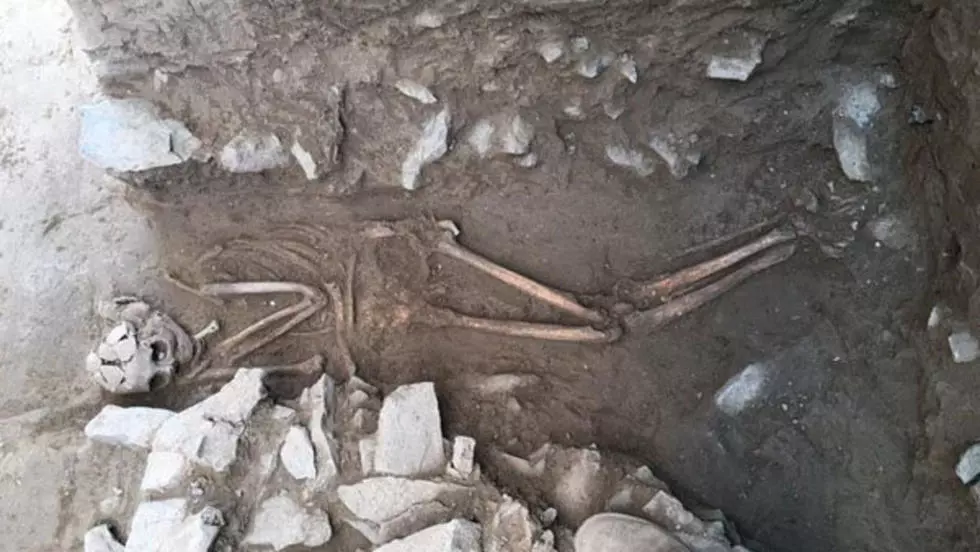Third Parthian skeleton unearthed in Isfahan

TEHRAN – Iranian archaeologists have discovered the remains of an ancient human in a prehistorical mount in Isfahan, central Iran, saying that is “the third Parthian skeleton” being unearthed there over the past couple of weeks.
“Right next to the burial site of the second skeleton we [had previously] found on Tepe Ashraf, we came across another skeleton that was only its head was evident, and we dug below the [modern] sidewalk to unearth the [whole] body,” Alireza Jafari-Zand who leads the archaeological survey was quoted as saying by ISNA on Monday.
The senior archaeologists, however, lamented provincial officials, of both the cultural heritage department and Isfahan Municipality, saying they have not taken any practical steps to inject funds and [help to] expand the excavation area.
“They have only given speeches about the importance of Tepe Ashraf and its discoveries,” he said.
Elsewhere in his remarks, Jafari-Zand said it is unfortunate that Isfahan has not a special museum dedicated to such treasured discoveries.
“We are nearing the end of the seventh archaeological season [at Tepe Ashraf] and the skeletons [so far] found will be transferred to a room in the Museum of Decorative Arts in Isfahan. Of course, it is unfortunate that there is no museum dedicated to these valuable ancient monuments in Isfahan.”
The ancient hill originally measured some 13 ha in area, however, only seven hectares of it has been remained being owned by the provincial administrations (some six ha has been tuned into modern urban spaces).
Over the past weeks, a team of Iranian researchers, led by Jafari-Zand, has found a new range of discoveries that offer novel clues about the history of Isfahan. They have also found an ancient burial containing the remains of a horse -- estimated to be four years old was found near a place where a giant jar-tomb was unearthed weeks earlier.
“Tepe Ashraf is the second place after the Tepe Sialk (in Isfahan province) that has yielded the discovery of such jar tombs that offers valuable clues to uncover the obscure history of pre-Islamic Isfahan,” according to the archaeologist.
Excavations at Tepe Ashraf initially began in 2010 when Jafari-Zand announced his team found evidence at the site suggesting that the Sassanid site had also been used during the Buyid dynasty (945–1055). “We stumbled upon a reconstructed part in the ruins of the castle, which suggests that the structure had been used during the Buyid dynasty.”
The Parthian Empire (247 BC – 224 CE), also known as the Arsacid Empire, was a major Iranian political and cultural power in ancient Iran. The Parthians largely adopted the art, architecture, religious beliefs, and royal insignia of their culturally heterogeneous empire, which encompassed Persian, Hellenistic, and regional cultures. At its height, the Parthian Empire stretched from the northern reaches of the Euphrates, in what is now central-eastern Turkey, to eastern Iran.
AFM/MG

Leave a Comment